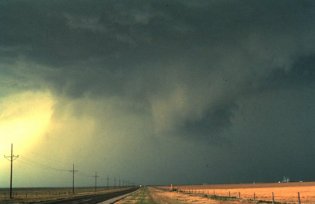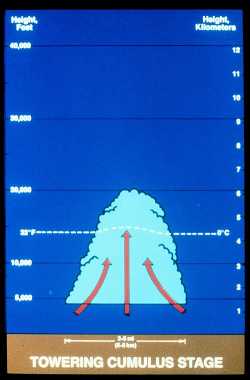Severe WeatherThunderstorms
Thunderstorms
have awed, intrigued, and inspired humans with their awesome force and
power. There are two basic kinds of thunderstorms, air mass and
severe. Air mass thunderstorms are usually created by convective uplift
of warm, moist, and unstable air. Have you ever been surprised by a
sudden downpour of thunderous rain on what was up to that point a pretty
nice day? If so, it was probably an air mass thunderstorm. Air mass
thunderstorms typically do not have very high winds, hail, or much
lightning associated with them. Severe thunderstorms, however, do and may
even spawn tornadoes. Severe thunderstorms tend to form along strong
cold fronts where the air on either side is very different, the
atmosphere is very unstable, and wind shear aloft is prevalent.
Regardless of type, both kinds of thunderstorms tend to go through the same basic stages of
development. We'll use the air mass thunderstorm to describe the stages
of development here. [ Stages of Thunderstorm Development
The initial stage of development is called the cumulus stage. During this stage warm, moist, and unstable air is lifted from the surface. In the case of an air mass thunderstorm, the uplift mechanism is convection. As the air ascends, it cools and upon reaching its dew point temperature begins to condense into a cumulus cloud. Near the end of this stage precipitation forms.
|


